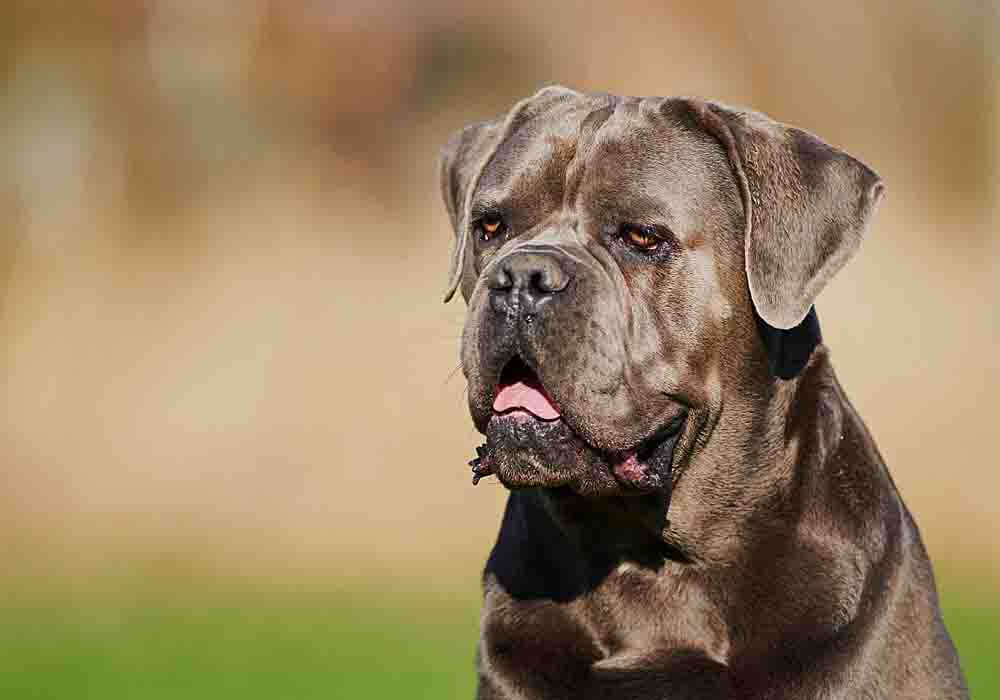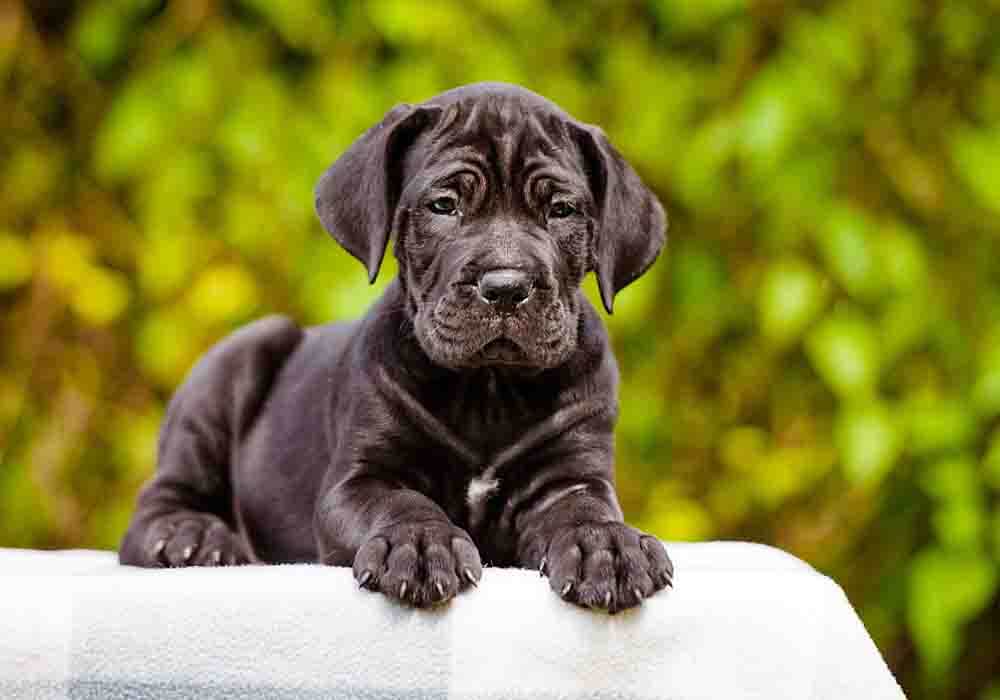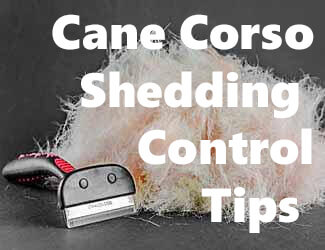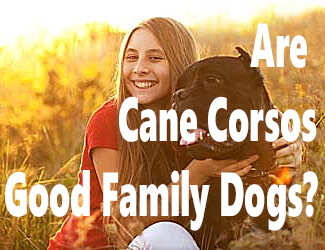Can a Cane Corso
Handle Hot or Cold Weather?
by Ken Alden
Keeping your dog comfortable at all times is important to every pet parent. Part of this involves ensuring they are not either too cold or overheated. So can a Cane Corso handle hot or cold weather?
Can A Cane Corso Handle Hot Or Cold Weather?
Cane Corso vs. Heat or Cold
Heat: They can handle hot weather due to their short fur.
Cold: They need time to adapt to cold weather but can handle it.
Weather extremes can be a problem though and cause overheating if too
hot and discomfort if too cold.
This article will take a closer look at how a Cane Corso handles hot and cold weather. We’ll also leave you with some helpful tips to make your pooch comfortable during extremes of weather. Read More Below...
Pro-tip: Ever try lifting a Cane Corso? Their weight can hurt not only your back but their joints when they hop down from cars, sofas or even your bed. To protect your back and theirs check out the best Mastiff ramps on Amazon.com now.

Cane Corso Heat Tolerance
A Cane Corso's short coat body will thrive in warm weather. However, in extremely hot weather, you need to keep an eye on your dog. Overheating can occur due to their relatively short muzzle.
It's necessary to understand your dog's physical characteristics and history, to figure out their adaptability to warm weather.
Cane Corsos are brachycephalic dogs, meaning that they have the classic short muzzle common with this dog type. But unlike other short-haired dogs like the French or English Bulldogs, Pugs, Shih Tzus, Boxers, or Boston Terriers, the Cane Corso has an athletic and streamlined body.
The Cane Corso was bred to hunt and run. They have a longer muzzle when compared to the snubbed short faces of other mastiffs. Brachycephalic dogs’ short muzzles can make it harder for them to stay cool during hot weather. These canines will pant a lot as the hotter months draw close.
The heat of summer is particularly challenging for their short snouts. Coupled with that, they are ineffective panters. They cannot pant enough to cool their bodies down via evaporation. Consequently, they cannot regulate their body temperatures well in the heat of summer.
Their stifled airflow will make them gurgle, snort, and struggle to catch a breath when they overheat. Mastiffs have a facial bone structure that has squeezed their airways into a tight maze. As a result, they have less air coming to their lungs than other dog breeds with longer snouts.
Since your loyal warrior dog will breathe through their mouth,
their soft palates will block most of their air intake. Your Cane Corso will
need to breathe harder to have enough airflow down their trachea, a taxing
activity.
Pro-tip: Cane Corso anxiety, aggression, destructive chewing, jumping up, fearfulness, and other behaviors can be controlled with the right training program.
Here’s a great course that
addresses these issues along with many other dog training basics: Check it out now!
Tips To Keep A Cane Corso Cool
- Cane Corsos need lots of activity and exercise but tone it down during summer. Let them have some breezy exercise to let up that pent up energy. Slow walks in the late evenings or early mornings are perfect.
- Substitute the collar for a harness to keep their airways as free as possible.
- Cane Corsos love the outdoors but don’t leave them out for too long. You might think a shaded post is safe, but brachycephalic dogs (short snouts) can succumb to the effects of overheating in a short time.
- Buy a cooling pad for your Cane Corso. Lying on it indoors will help regulate the heat. The Green Pet Shop Dog Cooling Mat is a comfortable and durable nylon fabric cushion that can work well to cool off your dog.
- Excessive weight can exacerbate breathing problems. Keep your working dog healthy and shed those pounds. ?
- Keep an eye out for heatstroke signs and monitor your dog through summer.
Cane Corso Cold Tolerance
When winter arrives, dog breeds such as the Siberian Husky or the Labrador Retriever cannot wait to get to the ice and snow. They adore snow much as toddlers do. They will bounce and roll on it.
How about your fearless protector? Would they rather be bundled up in a blanket on your couch until spring comes around, or would they be happier making snow angels? Should this ancient Roman dog of war wear warm coats in cold weather?
The answer to this question lies in the Cane Corso's rich ancestry. The Cane Corso's offspring are a mix of the Corso and the Neopolitan Mastiff. The fearless Cane Corso were once guard dogs for Roman legions. However, they were soon out of work as the Western Empire wars petered out.
They then adapted to farming, wild boar hunting, and livestock driving. They made their home in the lowland Italian countryside and on the mountain ranges as well. Your favorite large dog breed can handle both warm and cold weather.
That said, the Cane Corso's thin coat makes them more of a warm-weather breed. If you live in an extremely cold weather region, your fearless warrior will grow an undercoat for protection against the chill of winter.
If your little Corso puppy grows up in the cold, they will naturally develop a thicker coat, which will last them a lifetime. Your Cane Corso can handle certain cold levels but is not suited to outdoor living in wintry weather.

Are Cane Corsos an inside or outside dog? This article of ours tackles this question in depth before it arises.
Pro-tip: Cane Corso's (and their owners) love dog crates…and for good
reasons. Crates keep dogs from mischief while you're away, are perfect for house
training, for traveling by car, and provide the dog a place to de-stress. Check
out the best Mastiff crates on Amazon.com now.
Cold Care Tips for Your Cane Corso
Cane Corso's have coat thickness and color variants. The standard Corso coat is not very thick. However, your favorite guard dog can adapt to cold as their coat thickens over winter.
During winter, there are some precautions that you should take to keep your Cane Corso as comfortable as possible.
- Do not leave your loyal and protective dog out for too long, especially when the temperatures drop below 32°F (0°C). If the cold drops to lows of 25°F (-3.8°C), place a nylon dog jacket on them.
- A senior pooch will be less tolerant of extreme cold. Older Cane Corsos could have arthritis and other age-related health challenges, meaning that winter will be uncomfortable for them. A doggy coat and lots of warm rest will come in handy for the old working dog.
- An ill dog will have a much harder time adapting to wintry conditions than a healthy dog. If your pet is in recovery, they will also find it challenging to maintain their body temperatures until they are healed. A warm dog coat will be a welcome reprieve. The best dog coats have a perfect blend of acrylic and cotton or washable wool.
For
a good durable, and comfy dog coat, check out the BONAWEN Winter Dog Coat. It’s so soft and
lightweight, making it less cumbersome for your pooch. Alternatively, it keeps
your canine friend warm and waterproof.
Tips on Buying the Best Dog Coat For Your Cane Corso
- To have the best-fit, measure your canine friend's chest, neck, and waist before making an order. Measure the length of the dog from neck to waist. Leave the lower belly area free for play.
- Where possible, take your dog to the store and fit their doggy coat before purchase.
- Avoid clothing items with hooks, zippers, tags, or buttons on them, since they will only tempt your canine friend to chew or swallow them.
- Take the right measurements before purchase so that the doggy coat neither drags on the ground nor pulls off during play. Let the coat fit snugly but not too tight to cause discomfort.
- For added fun, find a pet-owner matching combo for color and style of coat. Dogs do not have a color or style preference so go ahead and have a ball picking your favorite colors and designs.
Can A Cane Corso Handle Hot Or Cold Weather?...Final Thoughts
By nature, the Cane Corso thrives in warm weather. But in extremely hot weather, your canine friend will have trouble cooling. You can buy him a cooling pad for comfort.
On the other hand, Cane Corso can adapt to cold weather with time by growing a warm and fuzzy undercoat. Some adapt fast, as per their nature, personality, health, and age. You can also chip in by getting them a doggy coat.
So when it comes down to it, can a Cane Corso handle hot or cold weather? All in all, the safest bet is to keep your dog indoors during extreme weather.

About the Author...
Ken Alden, a dedicated Mastiff owner for over eight years, is acclaimed for his expertise in care, grooming, and training. Read more About Me and my dog Shadow.
- Mastiff Guide Home ›
- Cane Corsos ›
- Can a Cane Corso Handle Hot or Cold Weather






